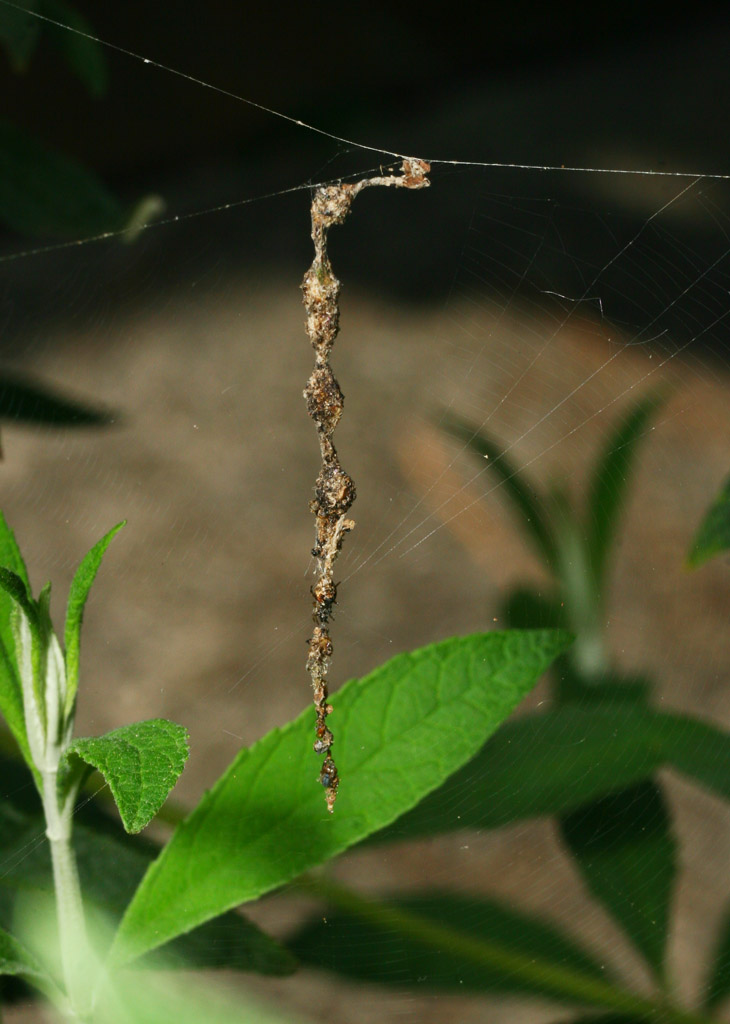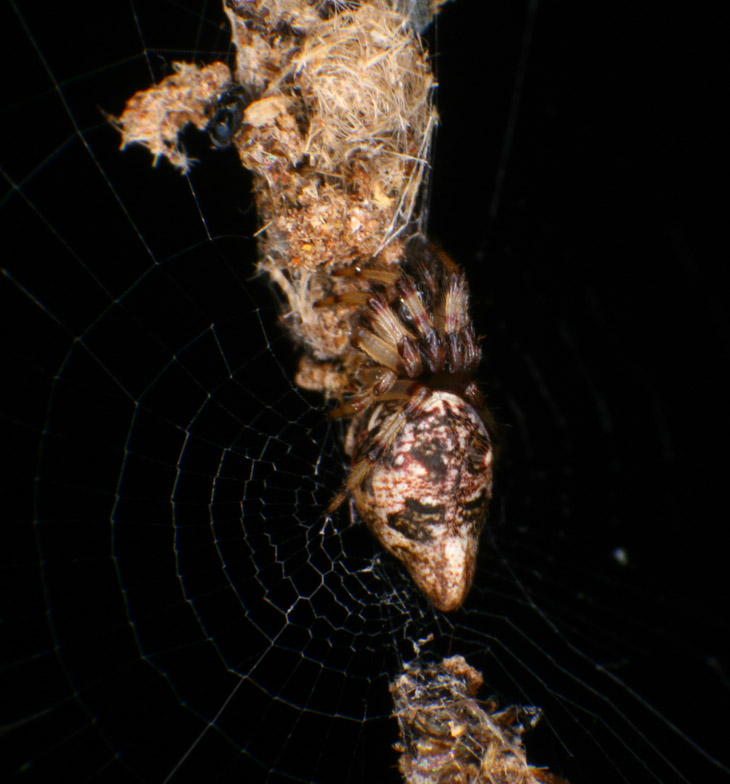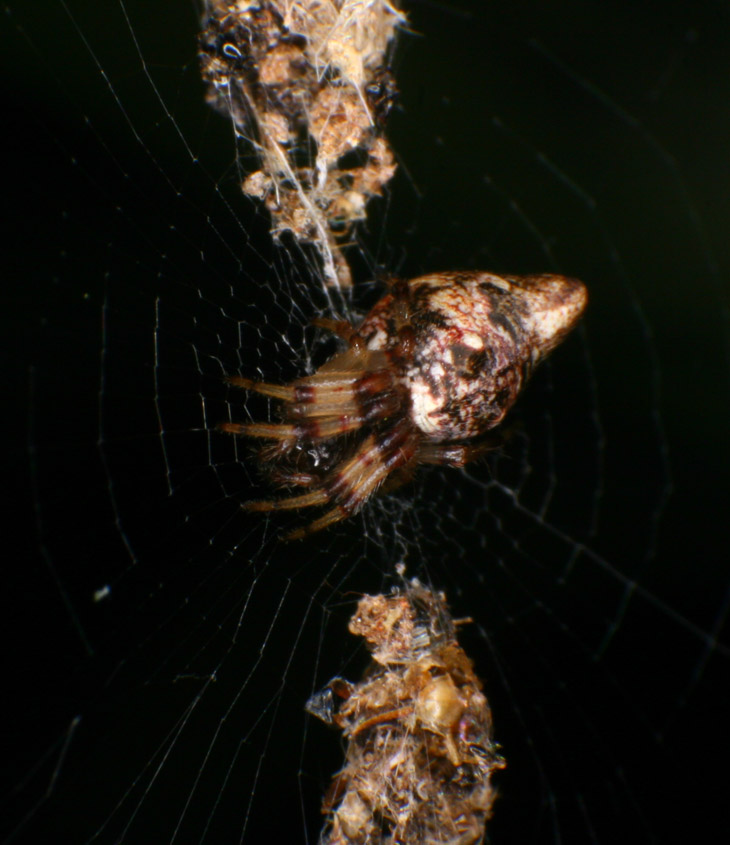On one of the new butterfly bushes out front sits a curious resident, not uncommon around here, but certainly challenging to photograph in detail. In fact, some of the images for this post represent the third attempt to get photos. The things I do for you.

No, stop sneering – this wasn’t one of the hard ones. And it’s not exactly subtle about the implied presence of a spider, anyway – not too many things just hover motionless in midair like this, so even without the light catching a few strands, the more astute of us could deduce the presence of a web. But the spider itself is right there too, hidden among the line of trash, and it’s easily the most appropriately-named spider that I’ve come across, at least if you use the common name: it’s a trashline orbweaver – well, okay, one of several species that bear that moniker. It gets slightly trickier from here. If you’re trying to see the spider, know that like every spider, it’s sitting right in the center of the web where the lines and circles converge, because that’s how they can feel prey striking the web the best, so ignore the deceptive bulges and use the light on the strands as a pointer – there is a very faint difference in color visible, a hint of symmetry. But here it is up close.

Now the spider is a bit more obvious, but seeing it this way takes quite a bit of magnification, since it’s tiny – just a couple of millimeters in body length. If it helps, the spider is facing upwards with its legs tucked in tightly. The trash line that it sits within is composed of its victims, which seems a bit macabre even for a spider, but it works awful damn well to camouflage the spider itself, doesn’t it?
There are two species that this might be, either Cyclosa turbinata or Cyclosa conica – as BugGuide.net says, “Females of turbinata differ from conica by being smaller in size and having a pair of anterior dorsal humps.” Should be easy, then: since there are no humps visible on the frontish side of the abdomen, then this is a C. conica. Not so fast, however – it also says that the anterior dorsal humps are “often indistinct.” And the photos they provide to illustrate this indicates that the humps can be subtle indeed. Well, peachy. But I got several images, so among them I should be able to distinguish this little detail.

If you’re seeing the same things that I am, you’re likely saying, “Well, those could be subtle little humps, arachnid A-cups” (okay, maybe that’s not so likely.) But the fun part comes in when you realize that, in photos and even in artwork, the idea of highlights and shadows defining shapes can easily be mimicked by, you know, bright and dark patches. It’s easy to see that there are two light spots on the abdomen with a pattern of darker areas that look like shadows, but are there really shadows? It’s a question for the ages.
I’m going to go with C. conica (no humps) and here’s why. In order to get these photos I had to resort to the ring-flash, because my standard macro lighting unit couldn’t get at an angle that didn’t throw far too much shadow – not with the web itself and the supporting branches in there; again, I had to be close to get these. The ring-flash, however, is known for one specific trait: not throwing shadows, since it produces light from all sides of the lens axis – one of the reasons that I rarely use one, because it takes away the shaping and modeling that helps define the subjects (also that it looks vaguely unnatural, and will produce ring-shaped reflections from shiny surfaces like eyes and water drops.) Given that, I’m going to say that we’re seeing nothing but color patterns on the abdomen of the spider here, but go ahead – prove me wrong, if you dare!
Interesting, though, is how well the trash camouflage seems to work, because this bush sits right alongside a hummingbird feeder, and hummers do indeed eat insects, especially ones that are easy pickings in midair and just the right size – yet this spider has been there for weeks. The trashline orbweaver can only get away with this method of camouflaging itself because spiders are not in the least social, and so there’s no such thing as a Web-Owners Association to get all whiny and foot-stampy because these webs aren’t conforming to the standards of decent spiders.




















































